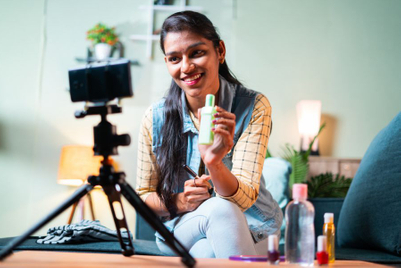
Influencer marketing is often touted as the 'next big thing' in digital marketing. And indeed, going by the raw engagement numbers, with top-tier Indian influencers claiming over 30 million followers, the return on investment is obvious. However, influencer marketing campaigns often fail due to one key reason: brands all too often confuse social-media engagement figures with the KPIs they really need to look at to correctly assess the success of an influencer campaign. Let’s take a look at some of the essential steps marketers can take to measure influencer campaigns and to work towards tangible goals.
Likes and shares aren’t the KPIs you want to focus on
While they certainly look nice in monthly reports, social-media engagement figures don’t tell the whole picture when it comes to measuring influencer-marketing success. Influencers, especially larger-scale social-media stars with six- to seven-figure followings, can guarantee thousands of engagements with a generic post. What isn’t so clear is how many of those likes, shares, and comments translate into qualified leads and product consumers. KPIs like discussions and organic mentions of your brand on different platforms, traffic to your website, and clicks on influencer offer links give a much better picture of how social-media engagement directly affects your bottom line and enables you to meet your objectives.
Social-media engagement figures need to be taken in the context of overall marketing goals. While it might be difficult to track raw conversion figures for influencer marketing, companies can evaluate success in terms of organic discussion and mentions that arise from engaged audience members, as well as brand-recall figures. By tracking these alongside sales and brand-awareness objectives, brands can get a clearer picture of exactly what influencer marketing is doing.
Micro-influencers often play an outsized role
A micro-influencer in the fashion space with 1,500 Instagram followers has a fraction of a fraction of the visibility of their platform-leading counterparts. When dealing with micro-influencers, it’s easy to be put off by lower-than-expected engagement rates. The thinking goes like this: what’s the point in investing in an influencer for an extra 200 likes?
While overall engagement rates might be lower, micro-influencers tend to be far closer to their followers and more engaged with them on a day-to-day basis. In many cases, their follower base is made up of their immediate peers, with the kind of personal, trust-based relationship that bigger influencers simply cannot manage. A $150 micro-influencer campaign (or even a free campaign in exchange for merchandise), that reaches 2,000 people with a 15% conversion rate is far more cost-effective than a $1,500 campaign with a mainstream influencer reaching 18,000 people, but at a 1.4% conversion rate.
Monitor referral traffic
A great way to put a tangible value on the impact of influencer promotions is through referral traffic. Provide your influencers with shareable referral links—it doesn’t hurt to incentivise action by embedding a discount or other special offer in the link. Marketers can then measure the rate of inbound referral traffic by tracking specific referral links allocated to particular influencers. It makes sense to look at referral traffic from multiple angles. Firstly, what percent of your sales target for a period of time was achieved through inbound referral leads? And second, what proportion of an influencer’s audience actioned a post with a referral link?
Define ROI in line with your campaign objectives
When you invest in an influencer, you’re investing towards a particular outcome. This isn’t always generating sales and it’s not always social-media engagement, either. When budgeting for an influencer campaign, you need to have a clear idea about your objectives and then work backwards to identify your KPIs for ROI. If you’re running a sales-driven campaign, referral traffic and overall changes to sales volume before and after the campaign can be used to measure success. On the other hand, if brand recall and visibility are your targets, focus on those social-media engagement figures: the likes, comments, and shares come into their own as KPIs in this context. When measuring the success of an influencer campaign, keep your objectives in mind and measure success in terms of how close you are to achieving those.
Conclusion
Influencer marketing continues to challenge brands because of the perception that influence is an abstract, hard-to-measure concept. However, by aligning your influencer campaign KPIs with campaign objectives, it’s possible to measure success in tangible, concrete terms.
Shuchi Sethi is India lead at influencer platform Casting Asia.



.jpg&h=334&w=500&q=100&v=20250320&c=1)


.png&h=334&w=500&q=100&v=20250320&c=1)




.png&h=334&w=500&q=100&v=20250320&c=1)

.jpg&h=268&w=401&q=100&v=20250320&c=1)



.png&h=268&w=401&q=100&v=20250320&c=1)
.png&h=268&w=401&q=100&v=20250320&c=1)

